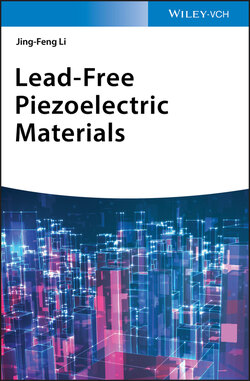Читать книгу Lead-Free Piezoelectric Materials - Jing-Feng Li - Страница 18
1.4.2 Piezoelectric Coupling Coefficient
ОглавлениеThe piezoelectric coupling coefficient (sometimes referred as the electromechanical coupling coefficient) is defined as the ratio of the mechanical energy accumulated in response to an electrical input or vice versa. It also corresponds to the fraction of electrical energy that can be converted into mechanical energy and vice versa. Thus, the piezoelectric coupling coefficient can be expressed by the following equation:
(1.10)
The coupling factor can be calculated based on the measured resonance and anti‐resonance frequencies of a piezoelectric element, depending on the vibration mode at which the element is excited. The most used coupling factors are kp and kt for the vibration along the radial and thickness directions in a circle‐shaped disk, respectively. In general, a useful parameter keff is frequently used to express the effective coupling coefficient of an resonator with an arbitrary shape, either at its fundamental resonance or at any overtone modes, and is expressed as follows:
(1.11)
where fr and fa stand for resonating frequency and anti‐resonating frequency, respectively. The coupling coefficients can be calculated for the various modes of vibration from the following equations:
(1.12)
where
| J | Bessel function of the first kind and zero order |
| J 1 | Bessel function of the first kind and first order |
| σ E | Poisson's ratio |
| η 1 | Lowest positive root of (1 + σE)·J1η = ηJ0(η) |
| F r | Resonance frequency (Hz) |
| F a | Anti‐resonance frequency (Hz) |
| ΔF | = Fa − Fr (Hz) |
Assuming that σE = 0.31 for PZT ceramics and η1 = 2.05, the following simplified equations holds:
(1.13)
(1.14)
